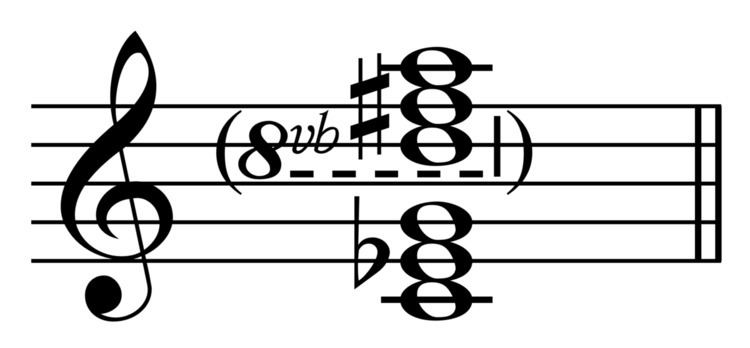 | ||
The Bridge chord is a bitonal chord named after its use in the music of composer Frank Bridge (1879–1941). It consists of a minor chord with the major chord a whole tone above (CE♭G & DF♯A), as well as a major chord with the minor chord a semitone above (CEG & D♭F♭A♭), which share the same mediant (E/F♭). ( Play ) Both form eleventh chords under inversion (DF♯ACE♭G = D11♭9 and D♭F♭A♭CEG = D♭mM7A9A11).
Bridge had strong pacifist convictions, and he was deeply disturbed by the First World War, after which his compositions, beginning in 1921–24 with the Piano Sonata, were marked by a radical change in musical language. The Bridge chord is fairly dissonant, containing seconds as well as two tritones.
References
Bridge chord Wikipedia(Text) CC BY-SA
